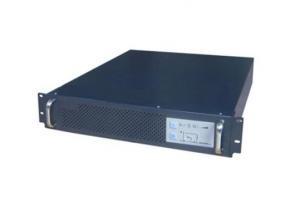2000va Solar Inverter
2000va Solar Inverter Related Searches
Best Solar Inverter For Home Home Power Inverter For Solar Best Inverter For Solar Pv Best Inverter For Solar Mini Solar Inverter For Home Solar Panel Inverter For Rv Inverter For 5kw Solar System Inverter For Solar Power Plant Inverter For Home Solar Solar Power Inverter For RvHot Searches
Solar With Inverter Price Solar Inverter With 2 Battery Solar Inverter With Ac Outlet Solar Inverter Price In China Solar Inverter Price In Dubai Solar Inverter Price In Uae Solar Inverter Price In Kenya Solar Inverter Price In Kerala Solar Inverter Price In Ghana Solar Inverter Price In Nepal Solar Inverter Price In Ksa China Solar Inverter Price China Hybrid Solar Inverter Inverter Solar System Price Solar Pump Inverter Price Home Solar Inverter Price Solar Inverter Panel Price Type Of Inverter For Solar Types Of Inverter For Solar Used Solar Inverter For Sale2000va Solar Inverter Supplier & Manufacturer from China
Okorder.com is a professional 2000va Solar Inverter supplier & manufacturer, offers integrated one-stop services including real-time quoting and online cargo tracking. We are funded by CNBM Group, a Fortune 500 enterprise and the largest 2000va Solar Inverter firm in China.Hot Products
FAQ
- The input voltage range directly affects the performance of a solar inverter. A wider input voltage range allows the inverter to accommodate a greater variety of solar panel configurations and fluctuations in solar energy production. This flexibility ensures optimal operation and increased energy conversion efficiency, resulting in better overall performance. On the other hand, a narrow input voltage range restricts the inverter's compatibility and may lead to reduced efficiency and output power.
- Yes, a solar inverter can be used with a solar-powered water pumping system. The solar inverter converts the direct current (DC) produced by the solar panels into alternating current (AC), which is necessary to power the water pump. By utilizing a solar inverter, the energy generated by the solar panels can be efficiently transferred to the water pumping system, allowing it to operate using clean and renewable energy.
- A solar inverter handles voltage dips or fluctuations in the grid by constantly monitoring the grid voltage. When it detects a dip or fluctuation, it rapidly adjusts its output voltage to stabilize the grid voltage. This process is known as grid support or grid-tied operation and ensures that the solar inverter maintains a steady and synchronized connection with the grid, even during voltage disturbances.
- Yes, a solar inverter can be used with a solar-powered water purification system. A solar inverter is responsible for converting the direct current (DC) electricity produced by solar panels into alternating current (AC) electricity that can be used to power various appliances and systems. In the case of a solar-powered water purification system, the solar inverter would be essential in converting the DC electricity generated by the solar panels into the appropriate AC power required to operate the system's pumps, filters, and other components.
- Yes, a solar inverter can be used with thin-film solar panels. Thin-film solar panels have a different structure and composition compared to traditional crystalline silicon panels, but they still generate DC electricity that needs to be converted into AC for use in homes or businesses. A solar inverter is responsible for this conversion process, regardless of the type of solar panels used.
- The role of MPPT (Maximum Power Point Tracking) in a solar inverter is to optimize the power output from a solar panel by continuously tracking and adjusting the operating point to ensure it operates at the maximum power point. This is crucial because the power output of a solar panel is affected by various factors such as temperature and shading, and without MPPT, the inverter would not be able to extract the maximum power from the panel, leading to reduced efficiency and output. MPPT algorithms monitor the voltage and current of the solar panel and adjust the load to match the optimal operating voltage, maximizing the power output and overall system performance.
- A solar inverter handles variations in AC load demand by continuously monitoring the load demand and adjusting the amount of power it delivers from the solar panels accordingly. This is achieved through advanced control algorithms that optimize the conversion of DC power generated from the solar panels into AC power that matches the load demand. The inverter maintains a stable voltage and frequency output, ensuring that the electrical devices connected to it receive a consistent and reliable power supply, even when there are fluctuations in the AC load demand.














































